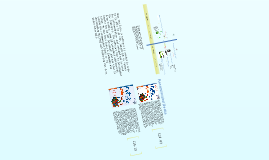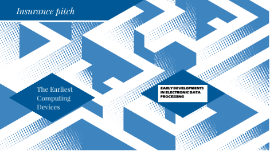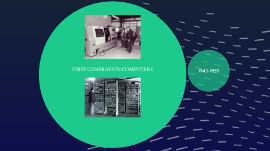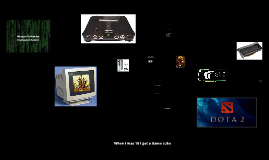Computer Presentation
Transcript: Creating Your own Computer The following components are needed: QUAD CORE AMD FX 4170 4.2GHz ASUS Board Bundle + 8GB Memory AMD FX 4.2GHz QUAD performance ASUS motherboard bundle AMD QUAD CORE FX-4170 4200MHz Bulldozer CPU 8GB DDR3 memory (2 x 4GB 1333MHz modules) ASUS M5A78L-M/USB3 Motherboard AMD 760G (780L)/SB710) chipset Integrated ATI Radeon HD 3000 GPU with multi-VGA output support : HDMI/DVI/RGB AI Suite II - One-stop Access to Innovative ASUS Features ASUS Anti-Surge Protection ASUS EPU (Energy Processing Unit) provides total system power management Integrated 8-channel High Definition audio Gigabit LAN for fast networking and broadband Expansion slots: 1 x PCI-E X16, 1 x PCI Express X1, 2 x PCI slots 6 x SATA 3 Gb/s ports with Support RAID 0,1,10,JBOD 2 x USB 3.0 ports 4 x USB 2.0 ports 120GB OCZ Agility 3 SSD Faster Performance for Cost-Effectiveness - SSDs have 100x greater throughput and instantaneous access times for quicker boot ups, faster file transfers, - Because many HDDs are needed to achieve the same performance, SSDs offer greater cost effectiveness for IOPS per pound. - Greater Durability The non-mechanical design of NAND flash mounted to circuit boards are shock resistant up to 1500g, unlike HDDs with various moving parts. Less Power, Silent Operation - SSDs use significantly less wattage at peak load than hard drives, delivering longer battery life in notebooks, less power strain on system, and a cooler computing environment. - With no moving parts, SSDs run virtually silent in your notebook or PC case to eliminate distracting noises during gaming or entertainment. OCZ Agility 3 SATA III Solid State Drives are designed and built to provide an exceptional balance of performance and value. The Agility 3 Series implements the cutting-edge SATA 6Gbps interface to deliver excellent sequential and random data transfer rates, significantly improving your computing experience over hard drives. In addition to enhanced performance, an Agility 3 upgrade promotes cooler, quieter, and more energy efficient conditions compared to traditional mechanical hard drives. With no moving parts, SSDs provide peace of mind with their superior durability and reliability. Unique and innovative, Agility 3 SSDs deliver a one-of-a-kind storage solution. ASUS, leading provider of high-performance graphics solutions, is now introducing the ASUS GTX650-DC-1GD5 which features 1GB GDDR5 memory on board and supports DirectX® 11 &OpenGL®4.2. ASUS unique DirectCU thermal design allows all-copper heat pipes to touch GPU directly so that it results in better heat dissipation. The performance is up to 20% cooler than the reference design. Embedded with ASUS exclusive Digi+VRM with Super Alloy Power, graphic cards can gain the benefits including longer lifespan and 30% more overclock stability. GTX650-DC-1GD5 also supports 4 HD displays so that gamers can experience unprecedented visual satisfaction without heavy economic burden. In addition to solid hardware specification, ASUS exclusive GPU Tweak functionality provides thoughtful and intuitive tweaking in all overclock scenario. GTX650-DC-1GD5 with all these eye-catching features now offers users all over the world a chance to experience stunning gaming environment and longer lifespan. Power Supply 880w G7 ATX PSU •High efficency 880w Power supply •Supports the latest specifications of ATX12V & EPS12V •Supports systems with multi-core CPU and GPU technologies •High efficiency = better power consumption and less heat generated •Compliance with Energy Star with <1W standby power •Features Super Silent & Ultra Cool thermal-control with 12cm cooling fan •Extremely low noise (< 20dBA) •Passive PFC •Triple/Quadruple +12V outputs provide the highest level of stability and safety •Independent output circuitry for each voltage output, overcomes the limitations of traditional combined output design •Over Voltage Protection (OVP) •Over Power Protection (OPP) •Short Circuit Protection(SCP) •Under Voltage Protection(UVP) •Universal 24pin(20+4pin) Main ATX Power Connector x1 •(4+4) Pin+12V Power Connector x1 •4 Pin (for HDD, CD-ROM..etc) x3 •Floppy Connector (4Pin)x1 •Serial ATA Power Connector x4 B Grade SamSATADVDRW Write speeds: DVD+R: 20X (27MB/sec), DVD+R Double Layer: 12X (16.2MB/sec), DVD+RW: 8X (10.8MB/sec) DVD-R: 20X (27MB/sec), DVD-R DUAL: 12X (16.2MB/sec), DVD-RW: 6X (8.1MB/sec) DVD-RAM: 12X (16.2MB/sec), DVD-RW: 6X (8.1MB/sec) CD-R: 48X (7.2MB/sec), CD-RW: 32X (4.8MB/sec) CASE The new Fractal Design Core Series offers a unique combination of design, features, cooling performance and value. The Core 1000 brings many features usually only seen in more expensive and larger cases. It supports long graphics cards up to 350 mm due to the innovative, vertical and removable HDD mounting bracket. (When using only the top HDD slot in the removable HDD tray) The front panel's easily removable and pre-fitted with fan filters to ensure a dust free interior. The sleek black interior is

















